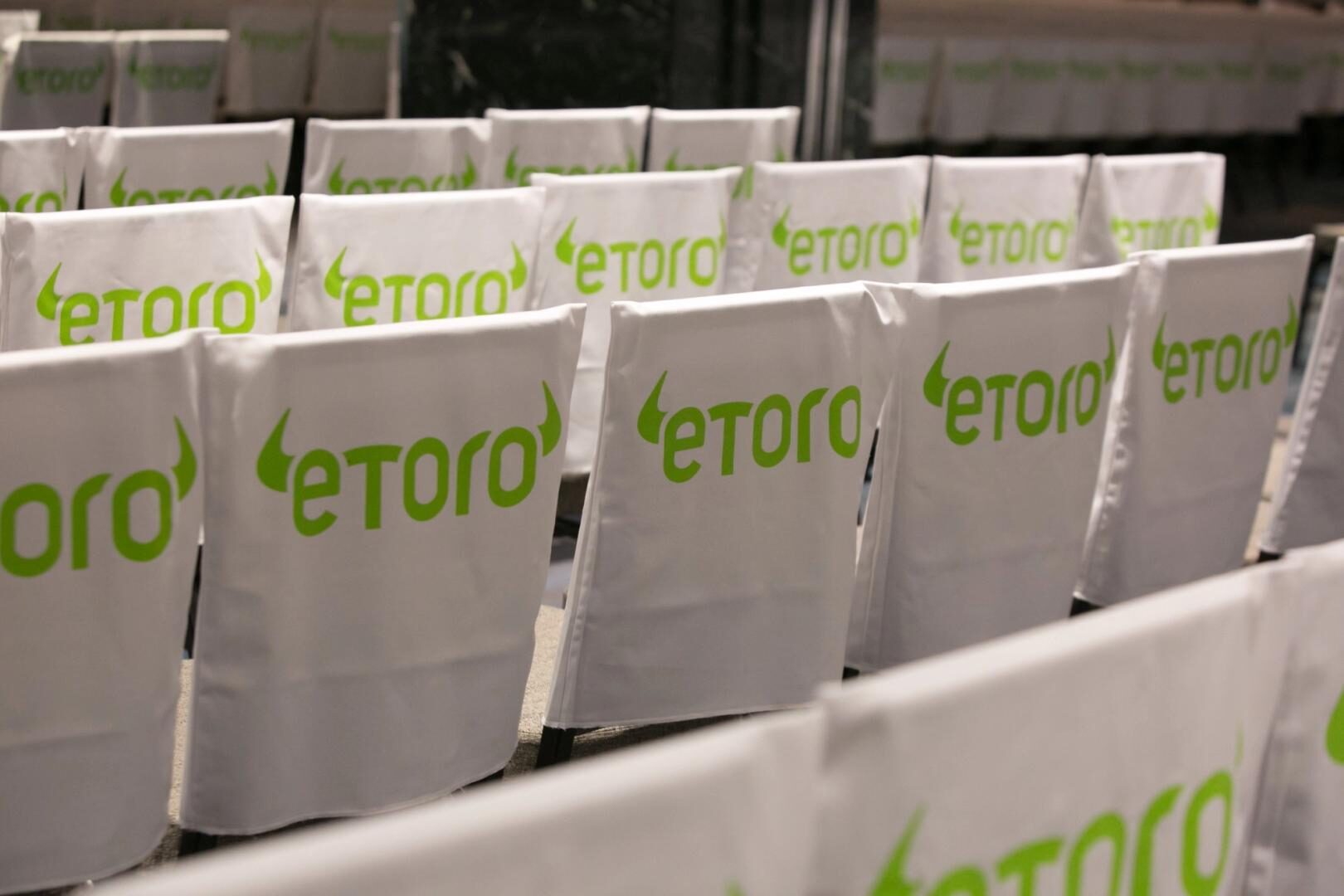-
Back to menu
Prices
-
Back to menu
-
Back to menu
Indices -
Back to menu
Research
-
Back to menu
Events -
Back to menu
Sponsored
-
Back to menu
Videos -
Back to menu
-
Back to menu
-
Back to menu
Webinars
Select Language
By Francisco Rodrigues, AI Boost|Edited by Aoyon Ashraf
Aug 12, 2025, 4:21 p.m.

- Crypto trading remained the primary revenue source for eToro, accounting for 91% of total revenue in Q2.
- eToro reported $2.09 billion in total revenue in Q2, with cryptoassets contributing $1.91 billion.
- The company is expanding its crypto offerings, planning to tokenize U.S. stocks on the Ethereum blockchain.
Crypto trading remained the backbone of eToro’s business in the second quarter, generating roughly 91% of the company’s total revenue, according to its latest earnings report.
That’s down slightly from the 93% share recorded in the first quarter, suggesting a modest increase in the contribution from equities and other trading segments.
STORY CONTINUES BELOW
For the three months ended June 30, revenue from cryptoassets totaled $1.91 billion, hit by a small net loss of $8.4 million from crypto derivatives trading.
After subtracting the $1.88 billion cost of cryptoasset revenue, digital asset trading still made up the vast majority of eToro’s $2.09 billion in total revenue, the filing shows.
In Q1, crypto-related revenue reached $3.5 billion, with an additional $77 million gain from crypto derivatives, accounting for more than 93% of the company’s $3.76 billion total revenue.
The company has been increasingly betting on crypto. Last month, it unveiled plans to tokenize U.S. stocks on the Ethereum blockchain to enhance its trading capabilities.
Etoro went public at $52 a share back in May, raising about $310 million from its Nasdaq listing. The company’s shares are now trading at $50.7, down more than 8.2% since its trading debut.
Disclaimer: Parts of this article were generated with the assistance from AI tools and reviewed by our editorial team to ensure accuracy and adherence to our standards. For more information, see CoinDesk’s full AI Policy.
Francisco is a reporter for CoinDesk with a passion for cryptocurrencies and personal finance. Before joining CoinDesk he worked at major financial and crypto publications. He owns bitcoin, ether, solana, and PAXG above CoinDesk’s $1,000 disclosure threshold.
“AI Boost” indicates a generative text tool, typically an AI chatbot, contributed to the article. In each and every case, the article was edited, fact-checked and published by a human. Read more about CoinDesk’s AI Policy.
More For You
By Krisztian Sandor, AI Boost|Edited by Stephen Alpher
32 minutes ago

The fund placements, managed by Coinbase’s asset management arm, begin on Aave, Morpho, Kamino and Jupiter, with broader rollouts planned.
What to know:
- Coinbase is reviving its Stablecoin Bootstrap Fund, first launched in 2019, to bolster stablecoin liquidity on decentralized finance (DeFi) protocols.
- The program first allocated funds in USDC and EURC stablecoins on platforms like Aave, Morpho, Kamino and Jupiter.
- The DeFi sector is rapidly growing, but market size is still below the 2021 peak.
















